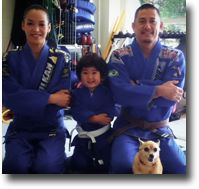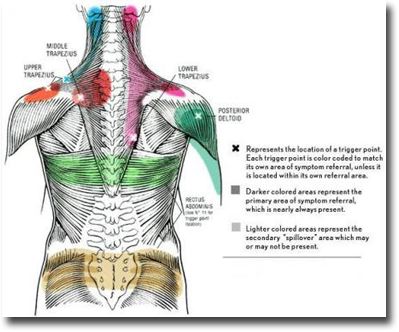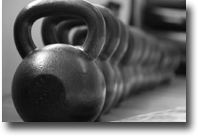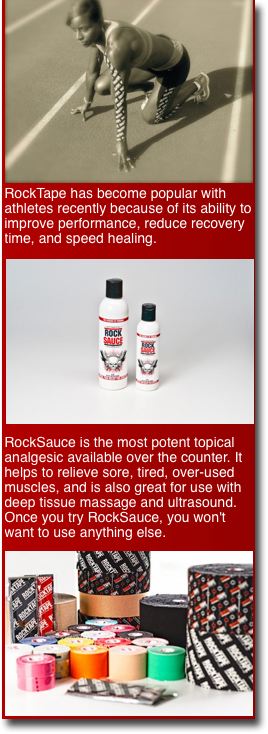Community website by MBC/Ernest Abrams. Call 808-739-9797 for advertising/sponsorship#KaimukiHawaii
Brian the Massage Guy - Brian Wong L.M.T.
- Tweet
Description/Comments:
 Licensed Massage Therapist working in Honolulu, Hawaii. I have been working as a massage therapist since 1998, specializing in Trigger Point and Myo-facial Release Massage for soft tissue pain and injuries. I began my bodywork career while working as a personal trainer and martial arts instructor. It was during this time that I became interested in massage therapy as a way to help my clients and students with injuries that prevented them from performing their best. My style of massage is a unique combination of different massage styles as well as a combination of different ideas and theories gained not only from massage, but also from years of working as a personal trainer and martial arts instructor. It is this combination of skill sets that also help me better able to relate to clients when dealing with specific injuries, particularly sports injuries.
Licensed Massage Therapist working in Honolulu, Hawaii. I have been working as a massage therapist since 1998, specializing in Trigger Point and Myo-facial Release Massage for soft tissue pain and injuries. I began my bodywork career while working as a personal trainer and martial arts instructor. It was during this time that I became interested in massage therapy as a way to help my clients and students with injuries that prevented them from performing their best. My style of massage is a unique combination of different massage styles as well as a combination of different ideas and theories gained not only from massage, but also from years of working as a personal trainer and martial arts instructor. It is this combination of skill sets that also help me better able to relate to clients when dealing with specific injuries, particularly sports injuries.
What I Do...
I specialize in a unique form of massage focusing on Trigger Point and Myofacial Release. My particular style is a dry style of massage, done over the clothes, which combines pressure, stretching and short, deep stroking motions to release trigger points and myo-facial adhesions. This style of massage is suitable for people suffereing from pain associated to tight restricted muscles and tissue, those more comfortable remaining clothed during massage or prefer a dry massage for its convenience. This is also an ideal massage style, because of its deep touch, for people who normally avoid massage.

Trigger Point and deep tissue massage
While many massage therapist claim to specialize in many different types of massage, in actuality many of them have only taken a few hours in different types of massage, usually learning only a preset patterned massage. Unlike this "one size fits all" approach to massage therapy, I prefer to concentrate on massage which focuses on the relief of soft tissue pain that is related to trigger points and facial restrictions.
Trigger Points are the "knots" that most people develop in their muscles. These "knots" cause restrictions in the muscles and when active, these points can refer pain to different parts of the body, not always just the part which is restricted. These pain patterns are known as referred pain. Knowledge of these Referred Pain Patterns and how to relieve the Trigger Points helps to alleviate many painful symptoms, including some commonly misdiagnosed conditions such as bursitis, arthritis, carpal tunnel, and sciatica.
When the "knots" or adhesions in the soft tissue occur, they can cause a chain reaction in other areas of the body due to restrictions in the facia. Facia, which is the "bag" that holds our body together, is intertwined throughout the body and connects muscles, tendons, ligaments, and joints together in long facial trains. Facia is also what gives our muscles its shape, it also surrounds every organ and joint. Restrictions in the facia leads to pain, fatigue, and altered joint mechanics. Restrictions from injuries that happened months or even years ago can lead to injuries and pain in other, seemingly unrelated areas. To restore optimum performance to the body, removal of these restrictions are of extreme importance.
PERSONAL Training
 Sometimes pain and injuries are not only the result of tight muscles and facial restrictions but can also be cause by weak, poorly conditioned muscles. Resistance training strengthens weakened areas of the body, helps re-teach the body correct alignment and proper movement patterns.
Sometimes pain and injuries are not only the result of tight muscles and facial restrictions but can also be cause by weak, poorly conditioned muscles. Resistance training strengthens weakened areas of the body, helps re-teach the body correct alignment and proper movement patterns.
Sitting in front of a computer screen for hours at a time not only creates tight, painfully restricted muscles but also creates weakness in other muscles that make it difficult to sit upright for long periods of time.
Many sports and athletic endeavors create repetitive motions that use or over-use some muscles creating imbalances that eventually can lead to injuries and decrease performance.
While massage goes a long way toward alleviating tight muscle groups, it is often important to strengthen weakened muscles to be able to regain proper muscle balance, which leads to better joint mechanics, improved sports performance, and an over all better feeling and functioning body.
Personal Training focuses on creating muscle balance by learning how to properly recruit weakened muscles and strengthening them. These sessions are typically one-on-one and are more personalized to concentrate on individuals specific issues.
One of the reasons so many people struggle with weight loss and chronic injuries is because they don't spend time learning the "correct" way to exercise. Just like any learned skill, it takes time and proper technique to learn how to perform at one's best. If you were trying to learn how to play the piano, what would be the first thing you would do? Find a qualified instructor, right? But for some reason, when starting an exercise program, most people choose to "go it alone." This often leads to injuries and lack of results. Save time and effort by learning the most effective way to get results while at the same time reducing your risk of injury.
 ROCKTAPE Taping
ROCKTAPE Taping
Rocktape is a form of kinesiotape. It has gained popularity recently with many athletes. It is used to help reduce pain, improve circulation and lymphatic drainage, and can also be used to brace injuries. Unlike other methods of taping for injuries, which can actually slow healing, RockTape can help reduce pain and recover from injuries faster.
A few years ago, while looking for a solution to healing some of my own injuries, I came across a product called "kinesiotape." It claimed to be good for injuries and although I had no real idea what it was, because it was from Japan and the wording was all in Japanese, I decided to give it a try. To my surprise it worked quite well. This interested me and I started looking more into how this tape worked. After using it for about a year, the only downside to using the tape for me was that it would not stay on very long. Although it was supposed to stay on for anywhere from 3 to 5 days, mine would usually come off in a day or two, especially if I were wearing it to training or exercise. This prompted me to find a better alternative. That is when I found ROCKTAPE. My first conversation with the guys over at ROCKTAPE was very pleasant and informative. While the original version of Kinesiotape was developed mostly for rehabilitation, they wanted to design something more suited to athletes and the demands of their sports, so they designed their own version of tape specifically for the purpose of using it under the more extreme demands of sports.
I began using this tape in addition to massage to help extend the effects of the massage work. It is great for helping reduce pain, re-teach proper movement patterns, and support strained muscles and sprained ligaments and tendons.
Taping can also help athletes perform better by helping circulation during events. This allows them to run faster, jump higher, and throw farther. It is legal to use in competition and is far less restrictive than braces and other forms of taping.
This tape works quite well at relieving pain from injuries and helps speed healing and recovery but it also adheres much better than anything else I have tried. Because it stays on better you are likely to have to use less. It comes in a variety of different colors, more than any other company on the market.
Below is the common injury pattern that happens during soft tissue trauma and how massage, training, and RockTape can help speed healing and even prevent future injuries.
* Cumulative Injury Cycle
Poor postural habits, repetitive motions, such as work for long hours sitting in front of a computer or the repetitive motions from exercise routines, create dysfunction in the connective tissue of the body. In response to this dysfunction, the body initiates a repair process to deal with these dysfunctions. This is knows as the Cumulative Injury Cycle. This cycle consist of;
-TIssue Trauma
-Inflammation
-Increased Muscle Tension and Retention of Metabolic Waste
- Adhesions
-Altered Neuromuscular Control
-Muscle Imbalances
Any trauma to the muscles causes inflammation. Blood flow is increased to the site of injury, causing increased temperature, redness, swelling and pain. It also activates the body's pain receptors, initializing a protective mechanism to prevent the body from further injury by creating muscle tension or spasms. This increase in muscle tension causes an increase in production of metabolic waste that the body produces as a result of the increased muscle tension. In turn, the injured areas become starved for oxygen and nutrients, thereby further increasing the sensitivity of the body's pain receptors.
Increased muscle tension begin to form adhesions or "knots" in the soft tissues. These adhesions form an inelastic matrix in the tissue that decreases the normal elasticity of the tissues. This causes the tissues to be unable create maximum tension. In order to compensate for this, other muscles are required to work harder, increasing the tension in those muscles as well as changing how the joints work together due to the increased tension around the joint. If left unattended to, these changes in the muscle length and tension can lead to permanent changes in the soft tissue.
As these soft tissue changes result, normal function of the muscles and the joints they control lead to altered neuromusclar control. This means that since the affected tissues can no longer function correctly, the body "figures out" how to move the body in an altered way to make up for the injuries. An example of this would be shortened hip flexors as a result of sitting for long periods of time. As the tissue shortens and becomes restricted, it does not allow the joints of the hips and back to function properly. As a result, someone who suffers from short hip flexors may change the motion they make while performing a squat while working out, placing more stress on the knees or ankles to compensate for the tight hip flexors. This leads to further stress on other tissues and more muscle imbalances.
* ROCKTAPE, Massage Therapy, and Resistance Training
Applied appropriately, the use of ROCKTAPE can decrease inflammation and lessen the stimulation of the pain receptors by increasing blood flow and decreasing the build-up of metabolic waste in the injured area.
The addition of Massage Therapy helps to further remove metabolic waste from injured tissues as well as to "break up" and re-align adhesions in the tissues to increase elasticity in the injured areas. Regular massage treatment also helps to prevent the build-up of waste, increasing the amount of "stress" that can be applied to the tissues before a pain response is triggered. For athletes, this means the ability to workout longer and harder. For everyone else, it means more time being pain free.
If muscle and joint function has been affected, the addition of proper resistance training and ROCKTAPE can help to teach the body how to move properly. This is an essential but often overlooked step of recovery. By not taking the time to re-educate the body, it will just be a matter of time before improper movement will create another injury.
ref no:10025
Questions? Ready for an appointment?
Featured Product/Service
Available
- RELATED LINKS
|
|
Kaimuki Hawaii.Com Home Page
View our featured events, news, businesses and primary links on our home page.Featured Sponsors Offers
Great offers from our sponsors who support the Kaimuki Honolulu, Hawaii community. More...Kaimuki Hawaii Directory
View Kaimuki, Hawaii primary directories. businesses, non profits, public, government and jobs.Calendar
Check out things to do in Kaimuki on the calendar of events.News
Keep up with the latest news and happenings in your Kaimuki community.Kaimuki Hawaii Featured Pages
View our directory of feature pages showcasing all the great things Kaimuki, Honolulu, Hawaii has to offer. Go Green in Kaimuki, restaurants, shopping, WiFi Hot Spots, fitness, health, real estate, home and garden, 80+ more directories... More...
Please send questions about this website to
webmaster@kaimukihawaii.com
Copyright© 2005 - 2018 KaimukiHawaii.com. All rights reserved.
Terms of Use / Legal Disclaimer / Privacy Statement
Site Designed and Managed by MacBusiness Consulting
Terms of Use / Legal Disclaimer / Privacy Statement
Site Designed and Managed by MacBusiness Consulting


